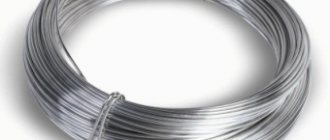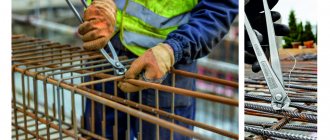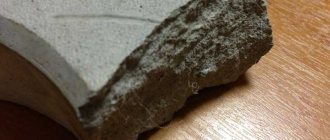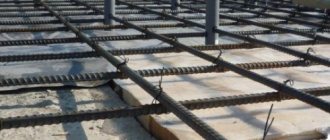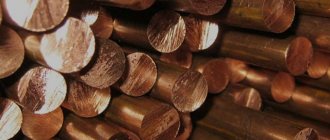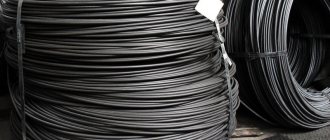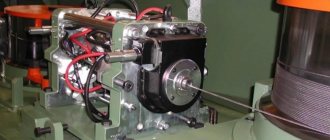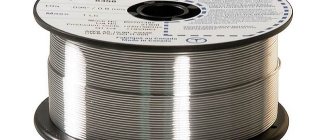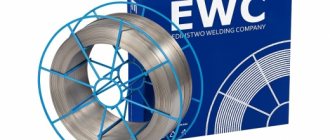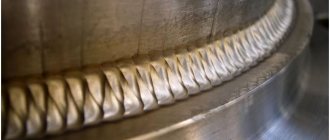The reinforcement bars connected to each other form a reinforcing frame, which serves as the “skeleton” of the reinforced concrete structure. The most common material used to connect rods is wire. Calculations of its consumption should be carried out individually for each reinforced structure.
What does wire consumption depend on?
The consumption rate of tying wire per 1 ton of reinforcement ranges from 5 to 20 kg, and it takes from 20 to 50 cm to complete 1 knot. These indicators are influenced by such parameters as:
- Type of reinforcing structure.
- Diameter of fittings.
- The spacing of longitudinal and transverse elements.
- The diameter of the wire.
- Knitting tool.
- View of the connection node.
These parameters are individual for each design, and accordingly, the calculation of material consumption per ton is different for each.
Features of knitting wire
To link individual structural parts or transport materials, smooth wire with high strength and flexibility is used. The most suitable are products made from low-carbon steel grades, manufactured in accordance with GOST 3282 “Low-carbon steel wire for general purposes. Technical conditions".
Since without heat treatment the wire has low ductility and breaks easily when bent, annealed varieties are almost always used for tying.
Annealing can be:
- Light - produced in an inert gas environment without the presence of oxygen. Such products are easily distinguished by their light surface without traces of scale.
- Black - heat treatment is carried out in air, so the surface of the metal when heated is covered with a layer of oxides - black scale.
The presence or absence of “blackness” on the surface does not affect the strength or ductility, therefore it does not play a special role when tying. However, during construction it may be necessary to produce welded meshes, which are also sometimes used as reinforcing structural elements. In this case, scale will interfere with quality welding. In order not to waste time on its partial or complete removal when it is necessary to use products not only for binding, but also in welding work, it makes sense to purchase light-annealed wire.
For additional protection required for outdoor installations, products can also be protected with a zinc coating. In this case, zinc grades Ts1 and Ts2 are used, and galvanic or hot-dip galvanizing is used, respectively. A polymer coating of various colors can also be applied over the zinc layer.
Weight table for 1 meter tying wire
Table of characteristics of the most used wire diameters for tying reinforcement, their weight and number of meters per kilogram. These values are necessary for calculations.
| Wire diameter, mm | Weight of 1 meter, g | Meters per 1 kg |
| 1 | 6,18 | 161,8 |
| 1,2 | 8,9 | 112,36 |
| 1,4 | 12,1 | 82,64 |
| 1,6 | 15,3 | 65,36 |
| 1,8 | 20 | 50 |
| 2 | 24,6 | 40,65 |
How to calculate wire weight
Wire is the same type of rolled metal as a channel or pipe. It is made in several ways. The production method depends on what metal the wire is made of, non-ferrous or ferrous, the diameter of the wire and the properties that the wire should have.
The simplest and most common method is drawing through machines with a system of gradually decreasing holes.
Scheme of operation of a drawing machine. The diagram shows: 1- intermediate coil, there should be several of them; 2- reel with finished products; 3-drawing installations.
Wire production by drawing method
The starting material is wire, which is produced by hot continuous casting using a method developed by a company from Finland. A rotary crystallizer is added to the molten metal, and casting is done vertically. With this method, it is possible to produce wire blanks at high speeds, up to 400 meters per hour. When melting wire, our inventors add an inert gas to a container with metal. Cooling to speed up the process is carried out using a special liquid that circulates in the substrate.
Before drawing the wire, oxides and scale must be removed from its surface, which is done by etching. Next, the semi-finished product is annealed, which will help improve the technological properties and facilitate the drawing process. The working surface of the machine is coated with lubricant to protect the wire surface from damage.
For delivery to the consumer, the wire is packaged as follows. Can be supplied in skeins weighing from 20 to 250 kg. In coils, the wire is wound in equal tight turns onto a drum. The skeins can be supplied without a drum, but tied in 4 places.
Winding in a rosette is a special winding where the turns are shifted from each other at a special angle. It allows you to unwind this type of winding by pulling upwards. In this case, the rings do not get tangled when stopping. The usual weight of such rosettes is from 400 to 800 kg. They are used for the production of hardware and meshes.
Coil winding is used for large skein weights - from 800 to 1500 kg. The principle is that the turns are wound horizontally on a special metal coil that has a connector. The coils lie from the base, gradually increasing the winding diameter. At the same time, the density of turns is much higher than that of a skein. Used in the production of electrodes, as well as in the production of nails.
Types of wire and its application
The wire is used very widely indeed and can be produced with a diameter from tenths of a millimeter to 10 mm according to GOST for steel wire.
It is used in electrical engineering (mainly from non-ferrous metals), for the manufacture of various hardware, including fasteners, springs, drills and other products. Wire is widely used in construction as a connection and tying of reinforcement, for the manufacture of frames in reinforced concrete structures, for weaving cables and steel ropes. Mesh is made from wire, both welded and twisted. Wire with special properties is used in welding production for automatic and semi-automatic welding.
Electrodes for manual welding are made from wire. Wire is also used in jewelry production and decorative arts.
One should not forget the use of wire for the manufacture of so-called coils - that is, barbed wire fences.
To obtain a profile of a special shape, it is flattened on special machines.
According to the type of profile, it is divided into the following: round profile, shaped profile, square, rectangular, trapezoidal, triangular, oval profile, as well as segmental, z-shaped, x-shaped, wedge-shaped, periodic and special profile.
Wire is also divided into groups according to size.
- Group 1 – up to 0.10 mm;
- Group 2 – from 0.10 to 0.20 mm;
- Group 3 – from 0.20 to 0.40 mm;
- Group 4 – from 0.40 to 0.80 mm;
- group 5 – from 0.80 to 1.60 mm;
- group 6 – from 1.60 to 4.0 mm;
- group 7 – from 4.0 to 6.0 mm;
- Group 8 – from 6.0 to 8.00 mm;
- Group 9 – above 8.0 mm.
If the wire is steel, it is divided according to its chemical composition:
- with carbon content up to 0.25% inclusive - low-carbon wire;
- with a carbon content of 0.25% - carbon wire;
- with an average amount of alloying components - alloyed wire;
- with a high content of alloying components - high-alloy wire;
with special components and additives that give the wire special properties, such as corrosion resistance, heat resistance, heat resistance, precision.
By type of heat treatment:
- annealing;
- vacation;
- hardening and tempering;
- normalization;
- patenting;
- release under voltage (stabilization).
Depending on the type of surface treatment, the wire can be:
- without any processing, including any remaining coating on the surface before the drawing process;
- with preliminary grinding or roughing during drawing;
- with special surface finishing by alternately applying polishing, grinding, etching;
- coated with galvanizing, tinning, copper plating, brass plating and other types of coatings;
- coated with a composition having a non-metallic base: polymers, phosphate and other types of coatings;
- having heat treatment carried out in a protective atmosphere called light;
- having heat treatment without protection and covered with scale, that is, black;
- treated with oxidation and having tarnished colors on the surface.
Wire has many uses:
- can be general purpose, which is suitable for many types of work;
- for creating a frame in reinforced concrete structures, both simple and pre-stressed;
- for welding work;
- for work on surfacing the surface layer;
- for making ropes;
- for making knitting needles;
- special composition for winding springs;
- for the production of spring washers;
- for creating a frame and reinforcing rubber products;
- for strings;
- for the production of meshes in various ways;
- for electrical wires and power cables;
- for power lines;
- for electrical engineering (motors, windings, resistances, etc.);
- for protective winding of cables and wires;
- for the manufacture of bearing elements;
- for the production of fastening hardware both by cold heading and by heating;
- wire for tying reinforcement;
- for packaging metal products such as bundles of sheets.
As for wire made of non-ferrous metals, it also has its differences in accordance with GOST.
Standards for wire production
Each type of product must comply with standards, this applies not only to metallurgical products, but also to any other that is produced for industrial use.
Of course, the wire from which products for various purposes will be made in the future has its own standards according to which it must be manufactured.
The very first, in my opinion, should be GOST 2333-80 for steel wire, which specifies all types of wire that are produced in Russia, its types and main characteristics.
GOST 2246-70 regulates the production of cold-drawn steel welding wire from such types of steel as low-carbon, alloyed and high-alloyed.
According to its purpose, it is divided into:
- wire for welding and surfacing;
- for the manufacture of electrodes and is designated by the letter E.
Low carbon and alloy wire can be:
- copper-plated, designated by the letter O;
- not copper plated.
The wire diameter can be from 0.3 mm to 12 mm.
The list of steel grades from which the wire is made can be found in GOST 2246-70.
The production of low-carbon steel wire for general purposes is described in GOST 3282-74.
In it, the wire is divided into the following types:
By type of processing:
- heat-treated wire;
- wire is thermally untreated.
By type of coverage:
- coated wire, available in diameters from 0.20 to 6.00 mm;
- uncoated wire, available from 0.16 to 10.00 mm.
The coating can be galvanized - classes 1C and 2C.
According to the manufacturing accuracy, the wire is made: high and normal accuracy.
Spring carbon wire must comply with GOST 9389-75, spring alloy wire must comply with GOST 14963-78. According to both GOSTs, it can be divided according to mechanical properties into classes 1, 2, 2A, 3. By brand they are A, B, C. Manufactured with normal and increased precision. Diameter from 0.14 to 8.00 mm.
For carbon steel wire for reinforcing prestressed reinforced concrete structures, the data is established in GOST 7348-81.
It is manufactured in both round (B) and periodic profiles (BP).
It is manufactured both with tempering and with tempering under voltage, that is, stabilized.
Type of periodic wire according to GOST 7348-81.
For wire used for reinforcing reinforced concrete structures, cold-drawn wire without tension is used, there is GOST 6727-80.
Barbed wire, the production of which is still relevant today, is produced in accordance with GOST 285-69.
Drawing of standard barbed wire according to GOST 285-69.
Metallurgical enterprises that produce this type of product
There are 81 enterprises in Russia that produce steel wire. In the Volgograd region there are two plants that produce cold-drawn wire, but have one flagship plant. There are many such enterprises in the Chelyabinsk region, probably more than in other regions. There are many factories in Moscow, for example, LLC "STAL", CJSC "IZHSPETSMASH", LLC "PK PROMSTALMETIZ", "TEKHPROF", "NPF YULIA". In the Moscow region in the cities of Korolev, Balashikha, Odintsovo. There are a lot of such factories in Tatarstan, in the Sverdlovsk region, Leningrad region and the city of St. Petersburg.
Knitting wire 0.8, 1, 1.2, 1.6, 2, 3, 4, 5, 6, 7, 8 mm.
Knitting wire belongs to construction hardware. Supplied to the customer in coils with a diameter of 0.16 to 10 mm. Intended for tying, pulling parts, materials, etc.
It is made by drawing from an alloy of iron and carbon. The manufacturing technology is simple and has not changed for a long time. Wire rod is used as a workpiece. Regulated by GOST 3282-74 standard. The rigidity of the alloy from which the wire is made is given by carbon; the higher its percentage in the mixture, the stiffer the wire.
According to heat treatment, wire is divided into two types:
— With heat treatment;
— Without heat treatment.
Depending on the type of surface, the wire is:
— Coated (galvanized);
- Without cover.
Coated wire is available in diameters from 0.2 mm to 6.0 mm.
Uncoated wire from 0.16 mm to 10.0 mm.
polymer coating is now increasingly being used . This provides improved corrosion protection and extends its service life. This coating has a characteristic green color. The advantage of this type of coating is better protection against corrosion. The coating prevents moisture from reaching the metal core.
Wire without galvanized coating can be either with or without heat treatment. The price of such wire is the lowest compared to other types. Do not forget that its durability is relatively low. Intended for one-time use.
Galvanized wire is most often used in open spaces. It is coated with zinc. It extends the life of the wire and increases resistance to moisture. Its price is slightly higher than that of uncoated wire.
Instructions for using the calculator
So, correctly using a calculator to calculate the weight of galvanized wire along its length on the current website - for building a bathhouse with your own hands - is not such a costly task, even a schoolchild can cope with it. Since there is a large list of online calculators presented here, there may simply not be enough time to talk about each of them, much less provide full instructions.
As a certain kind of concept, we present just one summarized fact aimed at general instructions for using an online calculator: the user selects the desired source (from among building materials), clicks on it, and then gets to a page with detailed information about the product. Below is a table where you can calculate the final value, be it weight, volume, size. As you can see, everything is relatively simple. You can even calculate the consumption of welding wire, binding wire and nichrome wire.
Online calculators for calculating the mass of knitting wire (calculating the mass of wire by length and calculating the length by mass)
